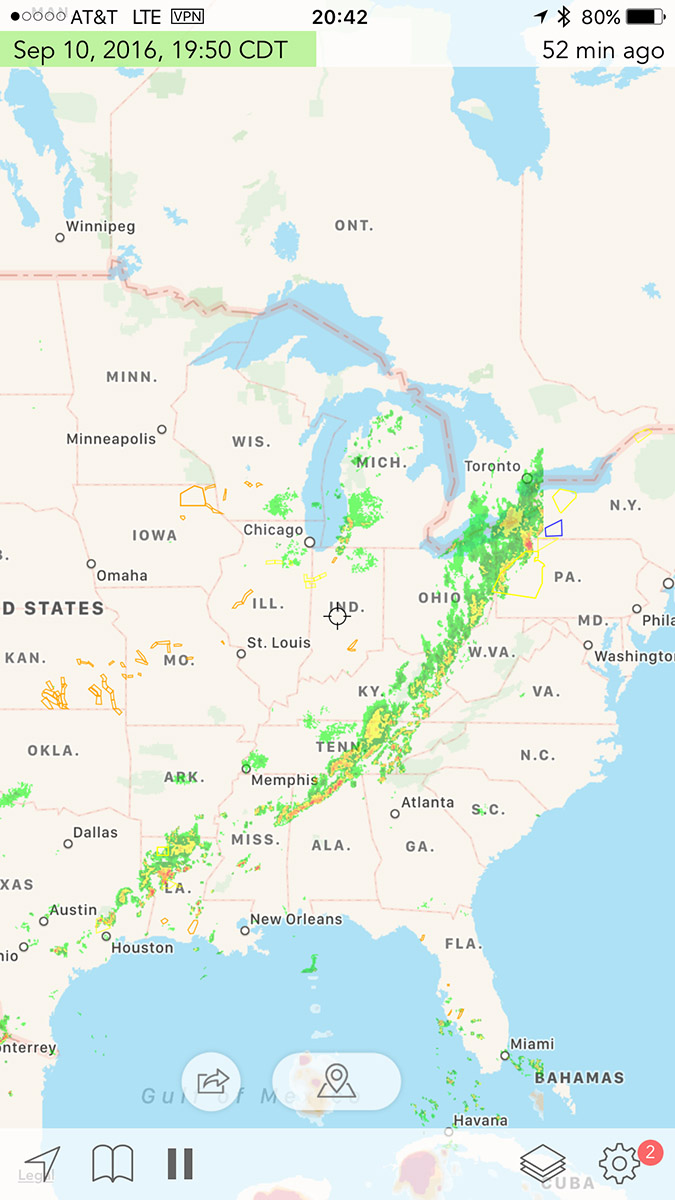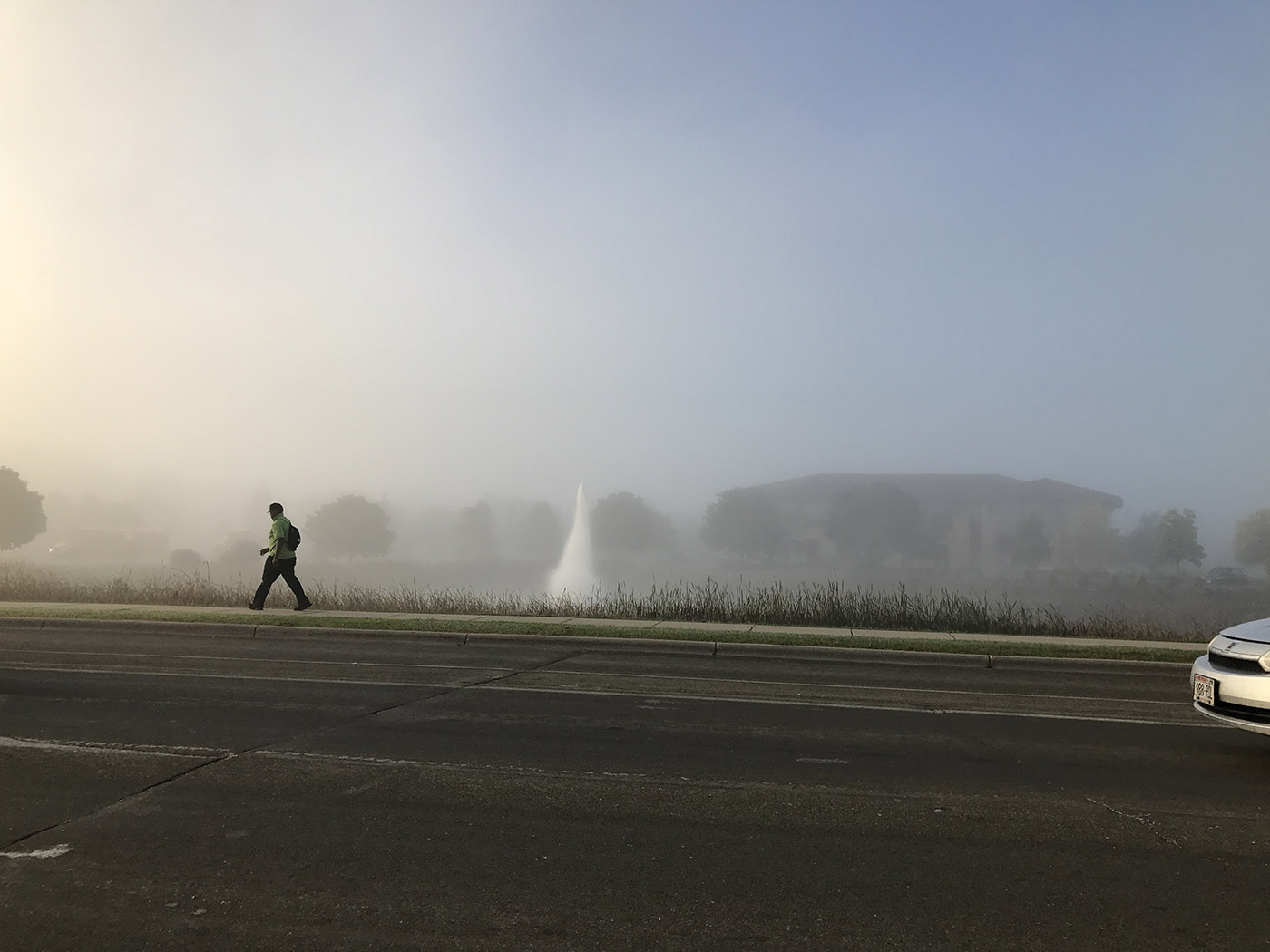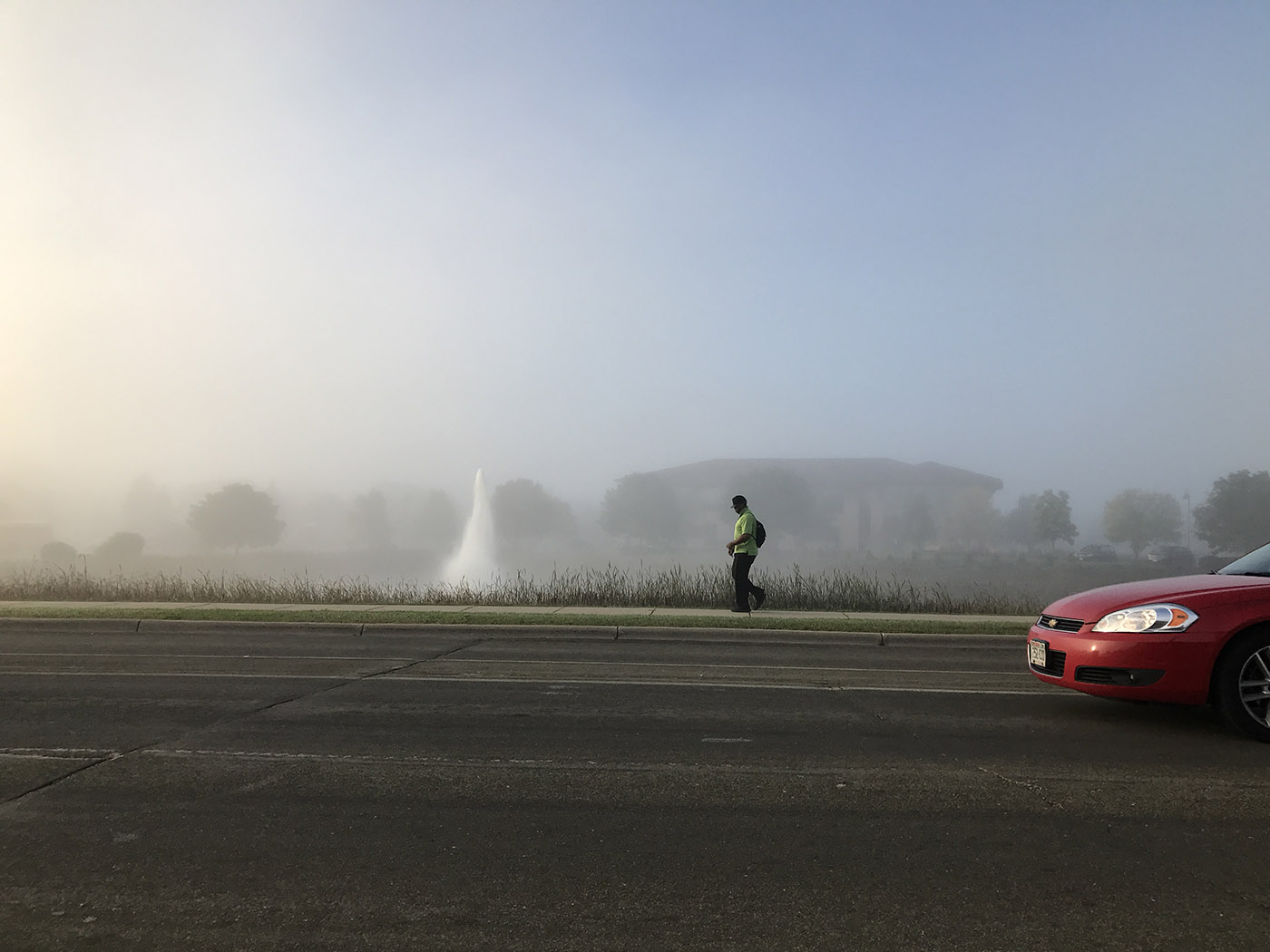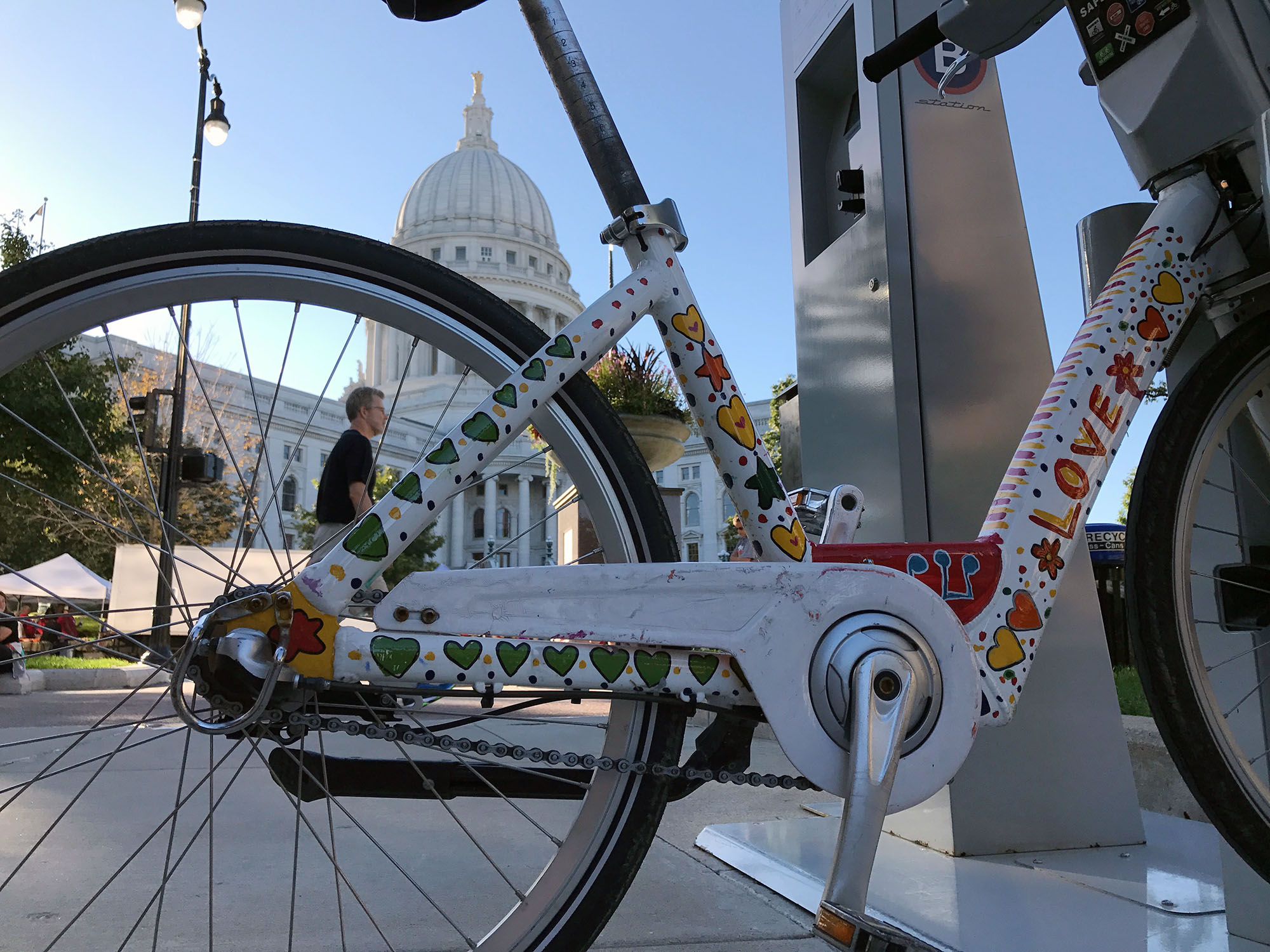Tap for a larger view.
Capitol Hill Books
Saturday Scenes: Madison
Demand for future transport
There are differing beliefs about the effects of autonomous vehicles on travel demand. On the one hand, we expect that automation of itself is a technology that makes travel easier, it pushes the demand curve to the right. For the same general cost, people are more willing to travel. Exurbanization has a similar effect (and automation and exurbanization form a nice positive feedback system as well).
Eero Saarinen’s Dulles International Airport Terminal Panorama
Still after all these years, unsure if I find the terminal amenable. Distinctive, yes, but I wonder if it is too Berlin – 1965?
Much more, here.
Serenity Aloft: United 511
Delayed flights occur, perhaps, to remind us to relax and enjoy the moment.
And, so it was while flying west, through a large line of thunderstorms, that gorgeous, sun soaked clouds appeared to my left.










The importance of being there
Libreville — When I got to Gabon to cover the recent election, I found myself the only photographer from a major global news organization in the country. People ask — why bother covering yet another election and unrest in yet another African country? I tell them – how can we not? This is where Africa’s modern history is unfolding. If we are going to tell the story of Africa, of the narratives that are taking place on the continent, then we cannot back off from coming to places like these.
I take pride in the fact that I’m here and telling the story and that we’re not passing on these kind of events.
3 Books for the International Visitor
Occasionally, I have the privilege of meeting an international visitor to the United States. In some cases, it is their first visit. Perhaps, they are visiting my home – the Madison area.
I often mention three books that might provide a lens to contemplate the recent United States.
They are:
A. When Pride Still Mattered by David Maraniss,
B. Zen and the Art of Motorcycle Maintenance by Robert Pirsig, and
C. Lake Wobegon Days by Garrison Keillor.
There are surely many others.
Death of an Insurrectionist How Warren Hinckle, dead at 77, changed American journalism.
If muckraker, journalistic impresario and scoundrel Warren Hinckle, who died last week at 77, is not getting the media sendoff befitting someone of his accomplishment and influence, he has nobody to blame but himself. The New York Times filed a lengthy obituary, and Hinckle’s hometown newspaper in San Francisco saluted him, but most of the nation’s other leading dailies gave his death a bye, which is a shame. There were a handful of appreciations in the left corners of the Web, yet none of them conveyed the force he exerted on journalism in his prime. He embraced the role of attack dog, formulated like this for a 1981 Washington Post profile: “What journalism is all about is to attack everybody,” he said after downing his fifth screwdriver. “First you decide what’s wrong, then you go out to find the facts to support that view, and then you generate enough controversy to attract attention.” The people who believe that the journalist should never be the story never met Warren Hinckle.
Hinckle mostly added footnotes to the art of journalism during the past 40 years, but during his prime, which ran from 1965 to 1975, he practiced journalism like a political insurrectionist, rushing into combat with one eye patched (from a childhood injury) and even sporting a cape on occasion. In his prime, he changed American journalism for good by creating Ramparts, which served as a media crawlspace for investigative reporters and culture critics in the 1960s. The magazine’s influence was immense: Its spirit was evident when the New York Times published the Pentagon Papers, and in 1968, when 60 Minutes got up and running; and it permeated Rolling Stone, launched in 1967 (and which the always acerbic Hinckle denounced as “counterculture bullshit”). The Ramparts lineage goes on: Mother Jones, which used the collapsed Ramparts as a kind of parts car; the alt-weeklies, which got started about the time that Ramparts died in 1975; and more recently sites like Gawker and the Intercept.
The demise of advertising business models
Here’s the thing. As vendors become more adept at increasing return on attention for their customers, their need to advertise is likely to diminish. If they are more and more helpful to their customers, word of mouth will spread among customers and they will flock to the vendors who can improve their return on attention. And, it won’t be just word of mouth among customers. On the product side, curators are likely to emerge to help customers sort through the ever expanding variety of products and services given deep expertise in certain categories of product and services. On the customer side, I have written about the emergence of trusted advisors who will invest in deeply understanding us as individual customers and become more and more helpful to us in recommending products or services we may not even have asked about.
With all of these resources to draw on, what is the value of conventional product advertising to the customer or to the vendor? It’s likely to diminish in importance. As I’ve written elsewhere, the power of pull will replace the diminishing power of push. We will see much more helpful forms of marketing evolve – an approach that I’ve called collaboration marketing. In this rapidly evolving world, companies that continue to rely on advertising as a business model are likely to experience growing pressure. Customers will gladly pay for the opportunity to increase return on attention and find ever more sophisticated ways to evade the classic push model of advertising.
This isn’t going to happen overnight. Companies have both the blessing of time and the curse of time. The blessing is that there is time to evolve and develop new business models. The curse is that, because this will not happen overnight, there is an understandable but very dangerous tendency to become complacent and not move aggressively enough to avoid the cliff ahead.


















